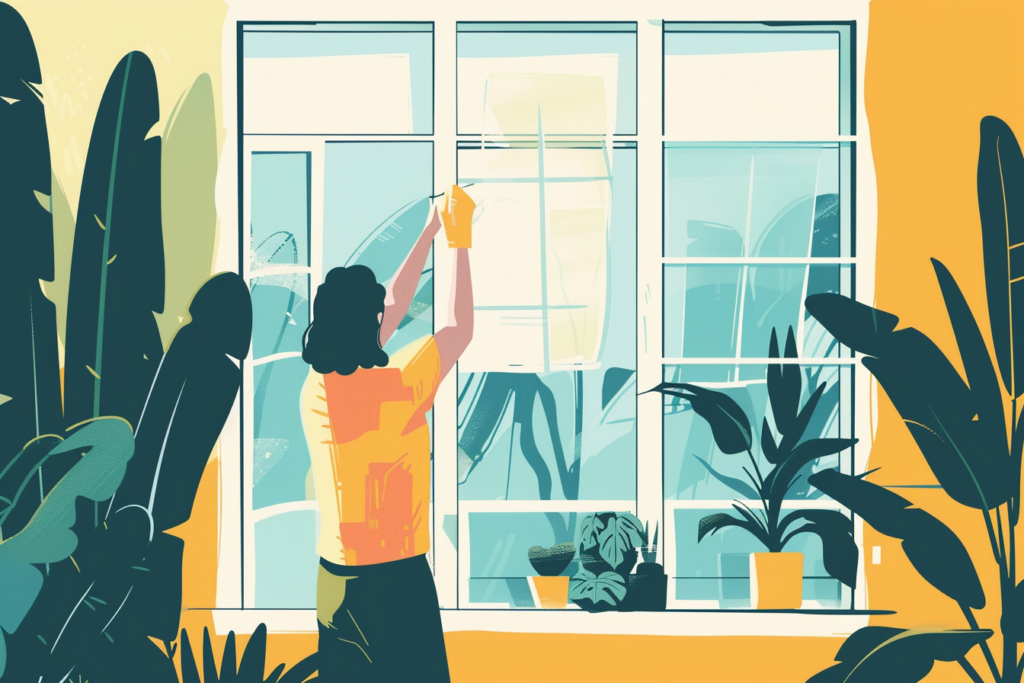Windows are not simply just architectural features; they are living artifacts that tell the stories of our past. They are tangible evidence of the craftsmanship and design trends of their time, making them invaluable components of our architectural heritage. In historic buildings, windows are not just functional; they are historical documents that offer a glimpse into the past.
Preservation, restoration, and replacement of historic windows require a nuanced understanding of their historical significance and functional needs. As caretakers of our architectural past, we play a crucial role in conserving these windows, meeting the present demands while respecting their historical value.
Preservation: The Art of Maintenance
Preservation is the first line of defense in safeguarding historic windows. It involves routine maintenance and minor repairs to prevent deterioration. The goal is to retain the window’s original materials and design to the greatest extent possible. This approach is guided by a principle of minimal intervention, which aims to maintain the window’s authenticity and integrity.
Key preservation practices include cleaning wooden frames with gentle, non-abrasive methods, repairing minor damages to prevent water infiltration, and maintaining the glazing and paint layers to protect the wood from the elements. Regular inspection plays a crucial role in identifying potential issues early, ensuring minor problems don’t escalate into major damages.
Restoration: Bringing the Past to Life

Restoration is a complex process that goes beyond preservation. It’s about bringing the window back to life, about returning it to its original state. This involves more extensive repairs, such as stabilizing rotting wood, replacing broken panes, and reinstating original hardware. The goal is not just to make the window look good, but to make it function as it did when it was first installed.
The key to successful window restoration lies in the meticulous attention to historical accuracy. This often requires research to understand the window’s original appearance and functionality, including the types of materials and construction techniques used. Skilled craftsmen replicate the original methods as closely as possible, using historically appropriate materials to ensure that the restored window remains true to its era.
Replacement: A Last Resort with a Respectful Approach
Replacement of historic windows is considered a last resort, undertaken only when the windows are beyond repair or restoration would be impractical or cost-prohibitive. In such cases, the challenge lies in balancing the need for modern functionality with respect for the building’s historical character.
When replacing historic windows, it is crucial to replicate (as closely as possible) the original designs, using materials that match or closely resemble the originals. Modern technologies allow for the creation of energy-efficient windows that mimic historic styles, providing a compromise between preserving aesthetic integrity and meeting contemporary energy standards. It is also important to check with your local city and county if there are any laws or rules to follow when changing a historic place. There could be specific rules or restrictions depending on where the building is located, what work is being done and how long the building has been in operation.
The process of replacement should be informed by thorough documentation of the original windows, including detailed measurements and photographs. This ensures that the new windows align with the historic character of the building, maintaining its architectural integrity while providing improved performance.
FAQS
Here are a few of the most common frequently asked questions when it comes to restoring and preserving historic windows.
1. Why is window restoration important for historic buildings?
Window restoration preserves the architectural integrity and historical significance of a building. It maintains original materials and craftsmanship, which are essential for the character and value of historic structures. Restoration also ensures that windows continue to function properly without compromising their aesthetic or historical authenticity.
2. Can all historic windows be restored?
While many historic windows can be restored, the feasibility depends on their condition and the extent of deterioration. It’s important to remember that a thorough assessment by a professional can often reveal restoration possibilities, offering hope for the preservation of these valuable architectural elements.
3. What are the benefits of restoring rather than replacing historic windows?
Restoring historic windows conserves original materials, maintains the building’s authenticity, and can improve energy efficiency with the right treatments. It also tends to be more environmentally friendly than replacement, as it reduces waste and the demand for new materials.
4. How do I know if my windows need restoration?
Signs that your windows may need restoration include difficulty opening or closing, drafts, rotting wood, peeling paint, and broken glass. Regularly inspecting old windows can help identify these issues early on.
5. How much does window restoration cost compared to replacement?
The cost of window restoration vs. replacement can vary widely depending on the condition of the windows, the extent of the needed repairs, and the specific requirements for historical accuracy. Restoration might initially seem more expensive than replacement, but it often proves cost-effective in the long run by enhancing property value and longevity.
6. Can restored windows be energy efficient?
Yes, restored windows can be made more energy efficient by adding weatherstripping, storm windows, and, in some cases, specialized glazing treatments. These enhancements can significantly reduce heat loss without compromising the window’s historical appearance.
7. How long does window restoration take?
The timeline for window restoration projects varies based on the number of windows, the extent of damage, and the specific restoration processes involved. A single window might take anywhere from a few days to several weeks.
8. Is it possible to maintain the original appearance of my windows after restoration?
Absolutely. The goal of any restoration project should be to preserve as much of the original material as possible while returning the window to its original appearance. Techniques such as Dutchman repairs, epoxy consolidants, and custom-milled replacement parts are used to maintain authenticity.
9. Do I need permission to restore windows in a historic building?
In many cases, especially if the building is listed or located in a historic district, you may need approval from local preservation commissions or other regulatory bodies before proceeding with window restoration. Always check local regulations and guidelines.
10. How do I find a professional to restore my historic windows?
Look for contractors or craftsmen who specialize in historic preservation and have experience with window restoration. References from local historical societies, preservation organizations, or architectural review boards can also be valuable resources for finding qualified professionals.
Conclusion
The care of historic windows is a delicate balance between preserving the past and accommodating the needs of the present. Whether through preservation, restoration, or replacement, the goal is to honor these architectural elements’ craftsmanship and historical significance. By doing so, we keep the story of our built heritage alive, allowing future generations to appreciate the beauty and craftsmanship of historic windows.
In approaching the task of working with historic windows, it is essential to proceed with sensitivity, expertise, and deep respect for the past, ensuring that these treasures of our architectural history are preserved for years to come.
You might also be interested in: 10 Signs It’s Time To Replace Your Windows




